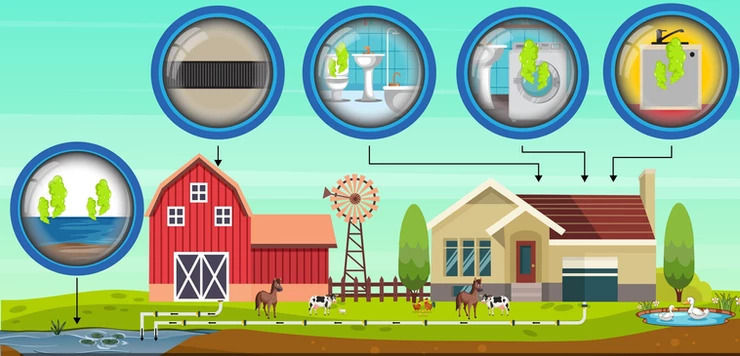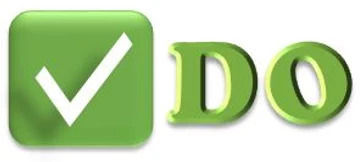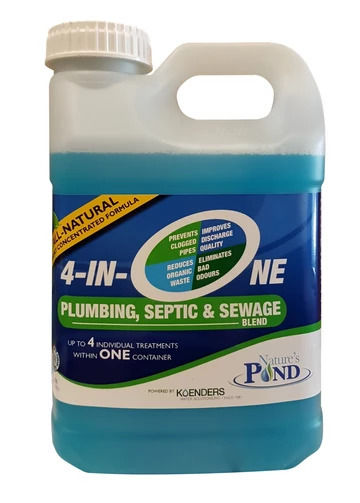
There are things in life that are bound to happen at one time or another. If you have a sink in your home, there is a drain and one day that drain will get clogged. In addition, many plumbing problems can occur in the home and on the farm. It is not something we think about every time we flush the toilet, run the washing machine or dishwasher, or even when we shower. But these essential activities have a major impact on our waste and water treatment processes, affecting our environment.
Common plumbing issues in the home are slow draining or clogged bath or shower drains, blocked sinks and toilets, blocked appliances such as dishwashers, washing machines and garbage disposal units. Many homes also experience unpleasant and lingering back odours from drains and sewer system backups.
Plumbing problems can arise whether you are on septic or sewage treatment.
Septic tanks and residential sewage lagoons are common in rural areas and on the outskirts of larger centers. They are underground holding tanks or small ponds that wastewater flow to from homes and buildings. These systems process waste into 3 compounds, water, gas, and solids. Natural occurring bacteria aid in the breakdown process of separating these compounds. The water and gases are released and solids settle to the bottom thus requiring periodic pump-outs or dredging.
Here are a few helpful Dos and Don’ts that should assist you in avoiding these problems with your plumbing, septic, and sewage, while helping the environment.

Think before you put anything down the sink, toilet or drain.
Being conscious of your water usage and thinking about what’s best for your system and the environment is an important first step.
Follow manufacturer’s instructions for recommended doses of cleaning products for your water type. Soft water will require less than hard water.
Use cleaning products little and often, opposed to lots all at once to avoid overloading your system. This can create an imbalance in the bacteria culture and slow down the breakdown process of waste. Use natural, environmentally friendly, phosphate-free cleaning products.
Spread out your clothes washing throughout the week.
Laundry days add excessive water to the system which creates an imbalance. Excess water will dilute your system, not giving the solid waste a chance to break down before water will be pumped out. This can cause blockages in the system when solid matter tried to pass through. To avoid this spread out doing laundry throughout the week.
Use liquid soaps and detergents. Powders can re-coagulate in your system and cause blockages. Stick to using the same products. The bacteria in your system will work more efficiently to break down familiar products so use the same soaps, detergents, and cleaning products. Phosphate-free soaps and detergents are best for the environment.
Empty your septic system according to instructions. Most septic tanks need to be emptied every 1-3 years. The number of people in your household, average water usage, and size of the tank will determine this. Other factors may cause the need for more frequent emptying, such as if a member of the household is going through chemotherapy treatments. Radiation is excreted through human waste and can cause harm to the bacterial culture in a septic tank. If someone in your household is going through chemo, your septic tank may need to be emptied as much as every 6 months.

Flush anything other than toilet paper down the toilet.
Tampons, sanitary napkins, wipes, baby diapers, incontinence pads, cotton pads, cotton swabs, rubber products, or any non-biodegradable items should not be flushed down the toilet. Be wary of products marketed as “flushable” like wipes, because even these items can cause blockages in your system. To be safe only flush toilet paper down the toilet.
Pour any fats, oils, or greases down the drain.
Fats can inhibit the breakdown process. It is estimated that one litre of full cream milk contains enough fat to cover the surface of an Olympic-sized swimming pool. Dispose of high-fat items in the garbage and wipe our greasy pots and pans with a paper towel before rinsing to minimize fat entering your system.
Pour any chemicals down the drain.
Medication, nail polish remover, mouth wash, engine oil, anti-freeze, fertilizer, paint thinner, bleach, hazardous acids and corrosive treatments along with any other products containing harsh chemicals should not be disposed of through septic or sewer systems. Chemicals can cause harm to the bacteria culture in the system, interrupting the breakdown process, corroding the holding tanks, plumbing pipes and the discharge which can potentially pollute ground and surface water.
Use acid-based products to get rid of smells or clogs in your washing machine, dishwasher, or drains. Even products that are meant for the drains can be harmful to your plumbing, septic, and sewer systems. The acid in these products can be corrosive, harm bacteria and pollute ground and surface water. The same goes for acid treatments for restaurant grease traps. Nature’s Pond 4-in-One provides a good substitute for these products.
Put food waste down the drain, or use a garbage disposal unit (garburator). Food waste breaks down differently than human waste and plumbing, septic, and sewer systems were not built to process both. Food waste is better suited to compost or the garbage. Overuse of a garbage disposal unit to force food waste down the drain increases the organic load and can cause problems in your septic and sewer systems.
A well-designed septic or sewer system shouldn’t incur any problems if these dos and don’ts are followed. But even when water, waste, and toilet paper are the only things entering the system, it takes time for the natural break down process to occur. And often these systems are tasked with more than they can handle. The average person uses between 80 and 100 gallons of water per day. You can understand why the most common problem for septic and sewage treatment plants is capacity, along with back up, odors, and phosphate polluted discharge. Nature’s Pond 4-in-One Plumbing, Septic & Sewage was designed to tackle these issues.

Nature's Pond '4-in-One Plumbing, Septic & Sewage'
Nature's Pond '4-in-One Plumbing, Septic & Sewage' is a simple, ready-to-use, safe and versatile product that cleans your drains, plumbing, dishwashers, washing machines and septic/ sewage TOO!! It reduces clogs and odours in household and barn drains and organic waste in septic and sewage!!
A natural blend of billions of beneficial bacteria units per gallon designed to effectively metabolize organic waste derived from animals, humans and plants including difficult to break down matter such as Fats, Oils and Greases that otherwise builds up and clogs plumbing and pipes.
Click Here to learn more about Nature's Pond 4-In-One and to purchase yours.